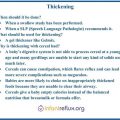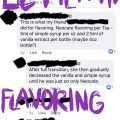Proton Pump Inhibitors (PPIs) are the safest, most effective medications available for treating acid reflux-related disorders in children and infants. They include:
- omeprazole, found in Zegerid®, Prilosec®, and generic form
- lansoprazole, found in Prevacid®
- esomeprazole, found in Nexium®
- pantoprazole, found in Protonix®
Each of the above listed PPIs are currently approved by the FDA for pediatric use. For more information on the literature pertaining to pediatric dosing of PPIs, see Research. The following are dosing recommendations for pediatric patients and are based upon the research and usage of the team at the University of Missouri. In some children, a higher or a lower dose is required to control symptoms. These recommendations are designed to be a starting place to assist your physician in choosing the right dose for your child. Here is a Memo that will help you further and perhaps will help you facilitate a discussion with your Physician(s).
Pediatric Dosing for Lansoprazole (Prevacid®) – Dosing dependent on age & weight
Age – Dose per day (mg/kg/dose)
< 3 months: 1.5 to 1.75 mg/kg three times per day
[this means take the recommended MG and MULTIPLY by baby’s weight in KGS. this is a calculation for ONE dose & you give this ONE dose THREE times a day]
3-6 months: 1.25 to 1.5 mg/kg three times per day
[this means take the recommended MG and MULTIPLY by baby’s weight in KGS. this is a calculation for ONE dose & you give this ONE dose THREE times a day]
7 months to 2 years: 1 to 1.25 mg/kg three times per day
[this means take the recommended MG and MULTIPLY by baby’s weight in KGS. this is a calculation for ONE dose & you give this ONE dose THREE times a day]
> 2 years: 1 mg/kg two or three times per day
[this means take the recommended MG and MULTIPLY by baby’s weight in KGS. this is a calculation for ONE dose & you give this ONE dose TWO or THREE times a day]
> 5 years: 0.75 to 1 mg/kg two times per day
[this means take the recommended MG and MULTIPLY by baby’s weight in KGS. this is a calculation for ONE dose & you give this ONE dose TWO times a day]
Pediatric Dosing for Omeprazole (Zegerid®, Prilosec®, and generic form) and Esomeprazole (Nexium®) – Dosing dependent on age & weight
Age Dose per day (mg/kg/dose)
< 3 months: 1.5 mg/kg three times per day
[this means take the recommended MG and MULTIPLY by baby’s weight in KGS. this is a calculation for ONE dose & you give this ONE dose THREE times a day]
3-6 months: 1.25 mg/kg three times per day
[this means take the recommended MG and MULTIPLY by baby’s weight in KGS. this is a calculation for ONE dose & you give this ONE dose THREE times a day]
7 months to 2 years: 1 mg/kg three times per day
[this means take the recommended MG and MULTIPLY by baby’s weight in KGS. this is a calculation for ONE dose & you give this ONE dose THREE times a day]
> 2 years: 1 mg/kg two or three times per day
[this means take the recommended MG and MULTIPLY by baby’s weight in KGS. this is a calculation for ONE dose & you give this ONE dose TWO or THREE times a day]
> 5 years: 0.75 mg/kg two times per day
[this means take the recommended MG and MULTIPLY by baby’s weight in KGS. this is a calculation for ONE dose & you give this ONE dose TWO times a day]
Use the information from the tables above to determine the specific PPI dosage that is appropriate for your child or patient, taking into account the strength and formulation of the drug selected.
NOTE: These are NOT the doses recommended by the makers of Prevacid or Zegerid. There are currently no PPI drugs with FDA approval for use in children under the age of 1 year. These recommendations are representative of typical dosing used at by the research team at the University of Missouri. The dosing of a PPI is up to your child’s physician. These recommendations are designed to be a starting place to assist your physician in choosing the right dose for your child. Here is a Memo that will help you further and perhaps will help you facilitate a discussion with your physician(s).
Pantoprazole (Protonix) is dosed at 1.5 to 2 times the omeprazole rate, so if you took 12 mg of omeprazole you would start at 18mg Protonix (pantoprazole)
A bit about Zegerid
A Note About Pharmacy Compounds of PPIs
If you are currently giving your child a compounded suspension of a PPI such as Prevacid made by a pharmacy, you should know that there is a good potential for the medication to become inactive (and therefore ineffective) in a much shorter time period than your pharmacist may be aware. The loss of activity is related to the effect of the flavorings added by the pharmacies. The flavorings cause the PPI to become unstable and break down so it can no longer inhibit acid secretion. Laboratory testing has shown that the majority of such compounded, flavored preparations become inactive within a week.
In addition, many pharmacies do not add enough buffer in their suspensions to protect the drug from degradation by stomach acid. This is particularly a problem if the child is receiving a very low-volume dose—less than 3 mL, for example—because the amount of buffer likely won’t be enough to protect the PPI from degradation by stomach acid.
For these reasons, we recommend the use of FDA-approved Zegerid® powder for oral suspension over the use of pharmacy-compounded suspensions, which are not FDA-approved. The Harriet Lane Handbook, a trusted source of pediatric dosing information for more than 50 years also states “The extemporaneously compounded oral suspension product may be less bioavailable owing to the loss of the enteric-coating.” Johns Hopkins: The Harriet Lane Pediatric Handbook 17th ed., Copyright © 2005 Mosby.
A recent study reviews the importance of this information:
Administration of PPIs
Click for more information on dosing PPIs in infants and young children including a printable version of the memo that can be taken to a physician.


